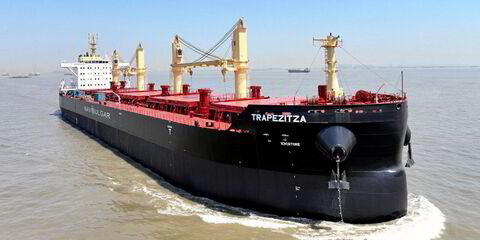If I had to spend $1bn now, I would order methanol tankers, while working together with a good partner.
This article is part of a series written by people across shipping in response to this question about how to deploy a hypothetical TradeWinds Sustainable Shipping Fund:
How, where and why would you invest $1bn for the best return in sustainable shipping, as the industry grapples with the need to cut carbon emissions, improve efficiency and keep cargoes moving in a world facing multiple economic and political challenges? The investment will be made now and ideally held for the next seven years to the end of the decade. As an added bonus, give one policy or regulation you would like to implement from 1 January 2023 to benefit shipping?
Methanol is the only technical solution that works today when it comes to renewable energy.
Today, most methanol comes from conventional energy production but, in the future, renewable-derived green methanol will be widely available.
Methanol is promising because any investment must look at the full lifecycle, and we can be confident that methanol ships will last 30 years or more based on current technology.
We are confident that green methanol will be one of the solutions going forward — and maybe the major one. It is why I would be confident to invest in it, and, indeed, we have through our joint venture with Proman.
Ammonia is high on the agenda but is a more complex and dangerous product to handle at all points in the supply chain.
While methanol does need care and attention — like any fuel — it is far less toxic and complex to handle than ammonia. And unlike ammonia, methanol does not have to be kept in a pressurised environment. In many cases, existing tank storage will work.
There is also much discussion about hydrogen. But there is uncertainty about how we can make that work given shipping’s unique nature.
Hydrogen seems like a good solution for shorter voyages. But for longer distances, hydrogen’s low-energy density compared with methanol, let alone gasoil, makes it challenging to throw weight behind.
Hydrogen will work for ferries, as will batteries and electrification. We will almost certainly see both deployed on shortsea shipping, and batteries will become critical in the port environment.
Economic realities
This discussion must be caveated by what is happening in the market. The economic reality is that spending on ships will be hard to justify at the start of 2023.
Shipping is cyclical by its nature and, if you buy at the peak of one of those cycles — where we are now — you will never make money.
Nevertheless, we must think about the future, so it is right to think about spending our hypothetical $1bn on sustainable solutions.
Alongside investing in methanol, I would also use some of the money to explore new ways of cleaning fossil fuels and investing in carbon capture, because the reality is that there will be no single solution to enabling a more sustainable industry.




